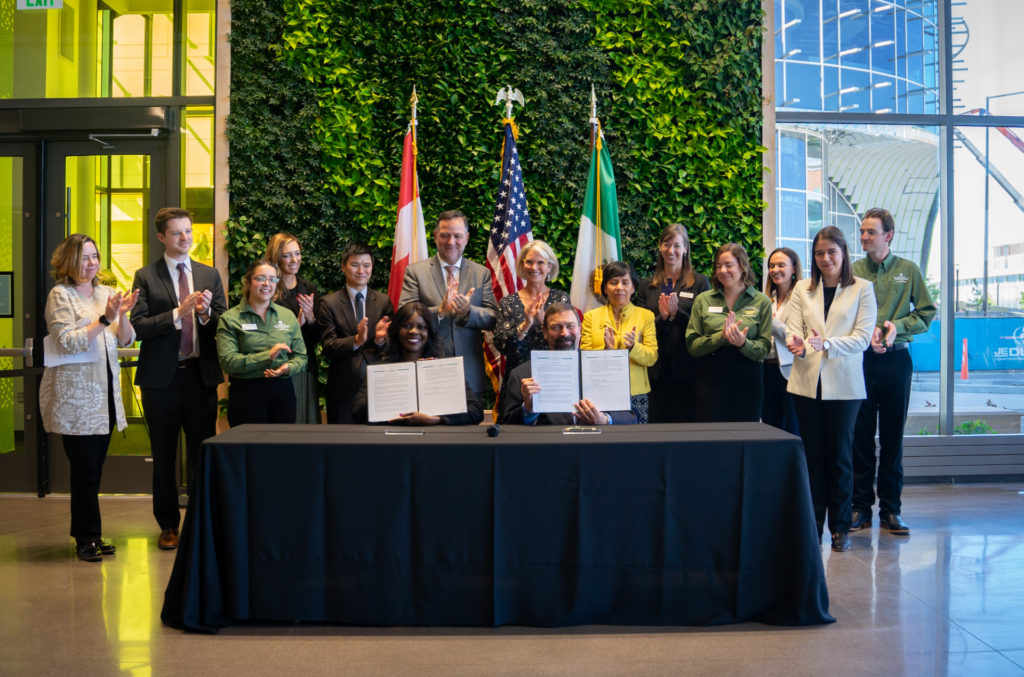

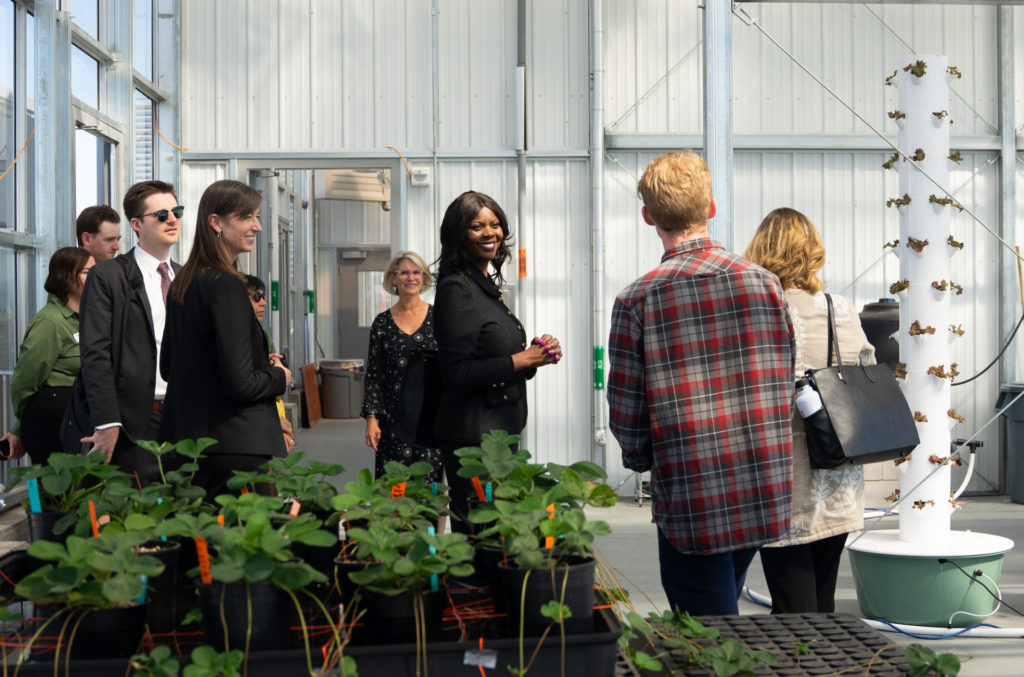
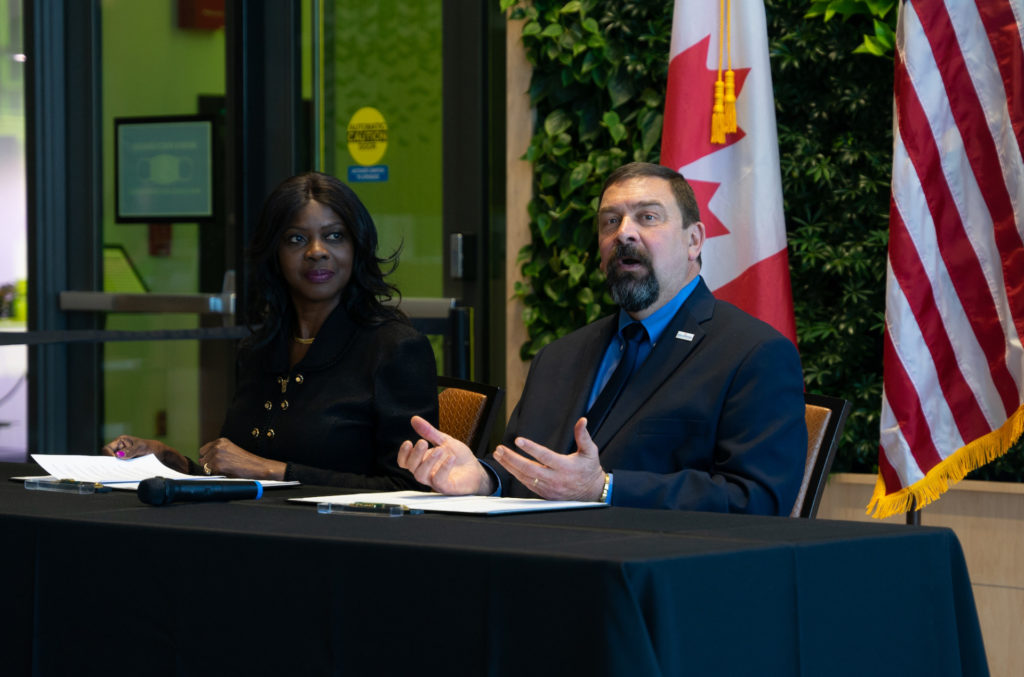
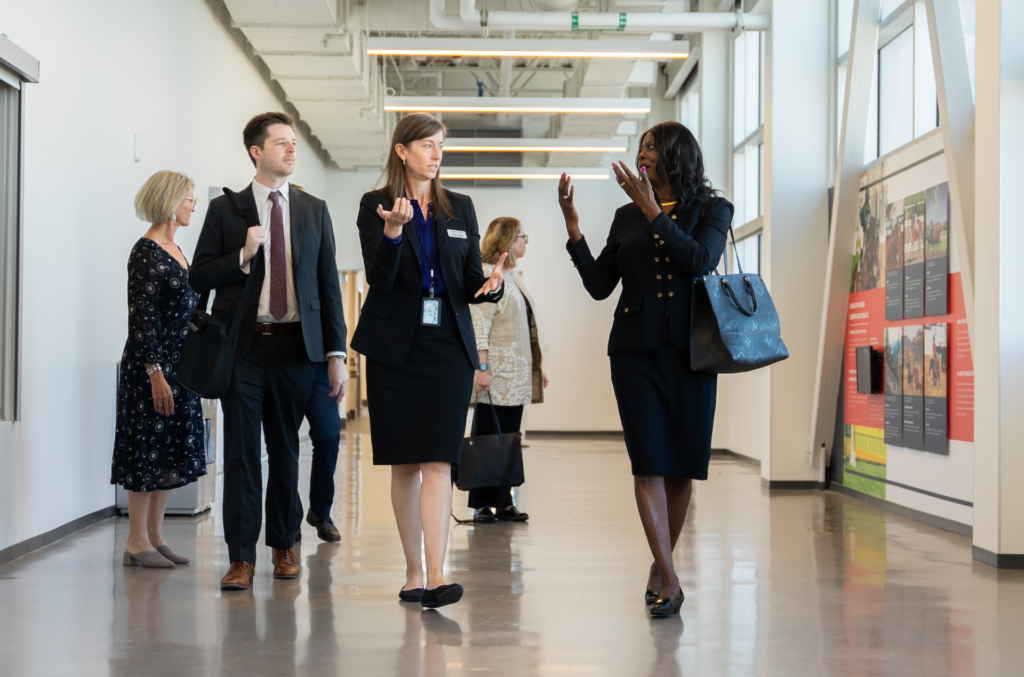
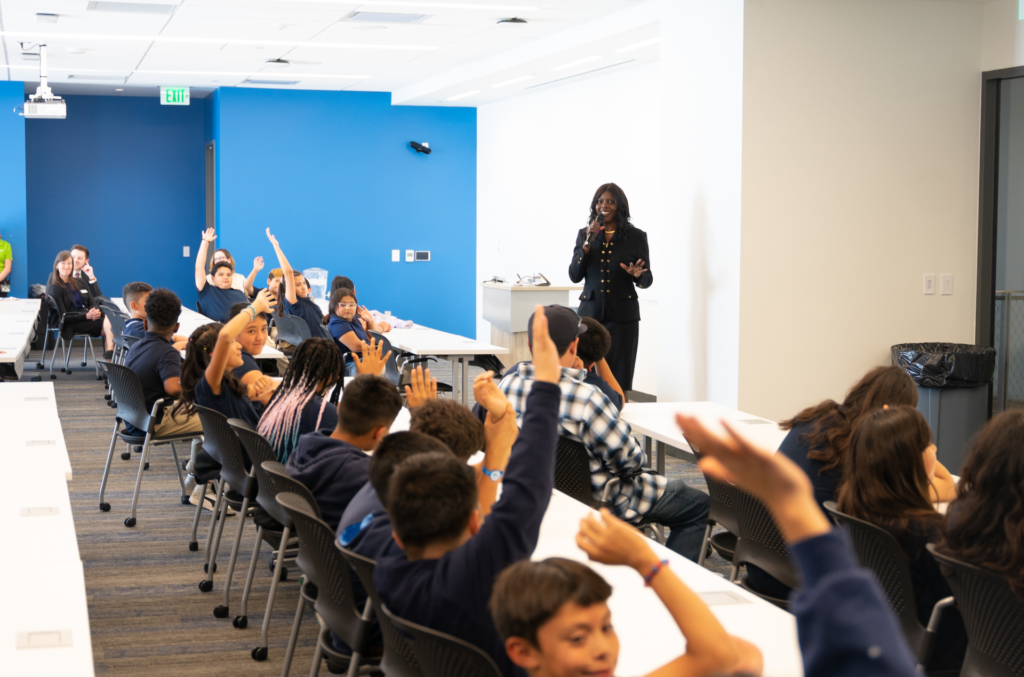
The question posed in 2019 was at once visionary and audacious: how do you build a platform for international agriculture at a campus that does not yet exist?
Leaders from Mexico, Canada, and the United States gathered at the new CSU Spur campus in Denver on Sept. 26 for a ceremony that answered that question by formalizing an arrangement for the Colorado State University System to serve as host of the North American Agricultural Advisory Network (NAAAN).
Dr. Chavonda Jacobs-Young, the United States Department of Agriculture (USDA) Under Secretary for Research, Education, and Economics, and Dr. Tony Frank, Chancellor of the CSU System, signed a Memorandum of Agreement (MOA) to solidify a partnership that has taken shape over the past three years and serves as a platform for the North American nations to engage in a global dialogue on best practices for turning research findings into real-world agricultural innovations.
“We are just as eager to hear and learn from our global colleagues as we are excited to share our knowledge and experience with them, in pursuit of our common goal of making healthy, safe, affordable food available to every citizen on the planet,” Jacobs-Young said. “Supplying citizens with food is an opportunity for innovation and collaboration between nations. Partnerships such as this help make it happen.”
In the United States, the cooperative extension services offered by each state’s land-grant university or universities provide a primary mechanism for helping research findings inform agricultural practice. Colorado State University, part of the three-campus CSU System, is Colorado’s land-grant university, and it is one of more than 100 such institutions in the country. While extension services are offered at the state level, USDA coordinates these activities at the national level and provides support.
With Monday’s ceremony, attended by USDA and CSU System officials as well as representatives from the Canadian and Mexican consulates in Denver, the USDA recognized the CSU System as NAAAN’s host. Frank, in his role as chancellor of the CSU System, serves as chair of the NAAAN steering committee. The committee also includes U.S. Secretary of Agriculture Tom Vilsack, Secretary of Agriculture Victor Villalobos (Mexico), and Minister of Agriculture Marie-Claude Bibeau (Canada), as ex officio members, and two additional agriculture officials from each country.
“What the North American Agricultural Advisory Network is about is clearly bigger than any one university, and it’s bigger than any one sector, whether that’s academia, government, the private sector,” Frank said. “It’s bigger than any one nation. It has to be, because the goal we have – providing food security to the North American continent – is one of the most important things we can devote our time and energy to.”
Speaking after the ceremony, Kerri Conway, special advisor to the chancellor and director of international agriculture at CSU Spur, recalled conversations with Frank in 2019 and 2020 in which the idea of building this type of international agriculture partnership started to take shape. At the time, the CSU Spur campus was a construction site and the United States was not formally involved in any of the regional networks that participate in the Global Forum for Rural Advisory Services (GFRAS).
Now, two of CSU Spur’s three buildings have opened, with the final building opening in January, and NAAAN is the 17th of GFRAS’s regional networks. Conway talked about the network’s significance for CSU and the CSU System.
“When we talk about a campus dedicated to global food security, having the opportunity to work with extension, advisory services, and the farming communities throughout North America is an exciting proposition,” she said. “The melding together of education, extension, and research that occurs through these efforts opens up new ways of finding solutions and expands the conversation.”
A recent report, “Feeding North America through Agricultural Extension,” produced by the USDA in partnership with the NAAAN, details the history of agricultural advisory services in Mexico, Canada, and the United States, and provides the results of a survey and mapping exercise conducted last year as a baseline to begin the NAAAN’s work. The survey was sent to 500 agricultural extension experts throughout the three countries. Responses from 170 extension experts pointed to a range of challenges, including the role of extension in supporting under-resourced rural communities and small farms, and how to address climate change, biosecurity, and an increasing focus on inclusivity, and other issues.
Jacobs-Young, joined by two USDA colleagues, started her visit to CSU Spur Monday morning with a tour of the Vida building, which opened in January and is focused on the life sciences and health. In the food and agriculture-focused Terra building, which opened in June, she met with a group of about 50 fifth-grade students from Denver’s Swansea Elementary School, located about a mile east of the Spur campus.
She told them about her own path in school, and how she became interested in science while continuing to play sports and pursue other activities. She peppered them with questions – Who wants to be a scientist? Are pajamas an agricultural product? – and responded to their queries about her life and career, including what it’s like to be the USDA’s Chief Scientist. “My favorite part is when our scientists have amazing discoveries,” she explained.
Later, during the signing ceremony in the Terra building’s lobby, she returned to that theme and the way that extension services carry those discoveries out into the world.
“Knowledge is most impactful when it is put into action, not left sitting on a shelf,” she said. “The very existence of extension programs is a living, breathing embodiment of that belief in the importance of sharing knowledge.”
One way GFRAS facilitates that exchange of knowledge is through its annual meeting. This year, the group will meet in Santiago, Chile, in late October to explore the relationship between extension and nutrition.
Conway and other NAAAN representatives will travel to that meeting soon, and they also are looking ahead to 2024, when NAAAN will host the GFRAS annual meeting in Denver, with the theme centered on building the next generation of agricultural leaders.
About the NAAAN
The North American Agricultural Advisory Network (NAAAN) is a North American platform among advisory services organizations, including government extension services, promoting and supporting innovation, knowledge utilization, and information sharing across rural and urban landscapes in Canada, Mexico, and the United States. NAAAN shares North American best practices and facilitates learning from global best practices. Learn more at naaan.csusystem.edu.
About CSU Spur
CSU Spur is a new, free educational year-round public life-long learning destination in Denver focused on engaging PreK-12 students, families, and visitors around food, water, and health. CSU Spur showcases the work of the CSU System campuses: CSU, CSU Pueblo, and CSU Global, and offers degree programs that originate from the campus offerings. Spur is built upon the land-grant mission of access to education and the belief that students can be anything they want to be. To inspire learners of all ages to engage in important world issues, CSU Spur brings together scientists to collaborate, puts science on-display, and showcases career paths. The CSU Spur campus provides immersive learning experiences and cutting-edge research across three buildings: Vida, Terra, and Hydro. Learn more at CSUSpur.org.
About the USDA
USDA touches the lives of all Americans each day in so many positive ways. In the Biden-Harris Administration, USDA is transforming America’s food system with a greater focus on more resilient local and regional food production, fairer markets for all producers, ensuring access to safe, healthy and nutritious food in all communities, building new markets and streams of income for farmers and producers using climate smart food and forestry practices, making historic investments in infrastructure and clean energy capabilities in rural America, and committing to equity across the Department by removing systemic barriers and building a workforce more representative of America. To learn more, visit www.usda.gov.